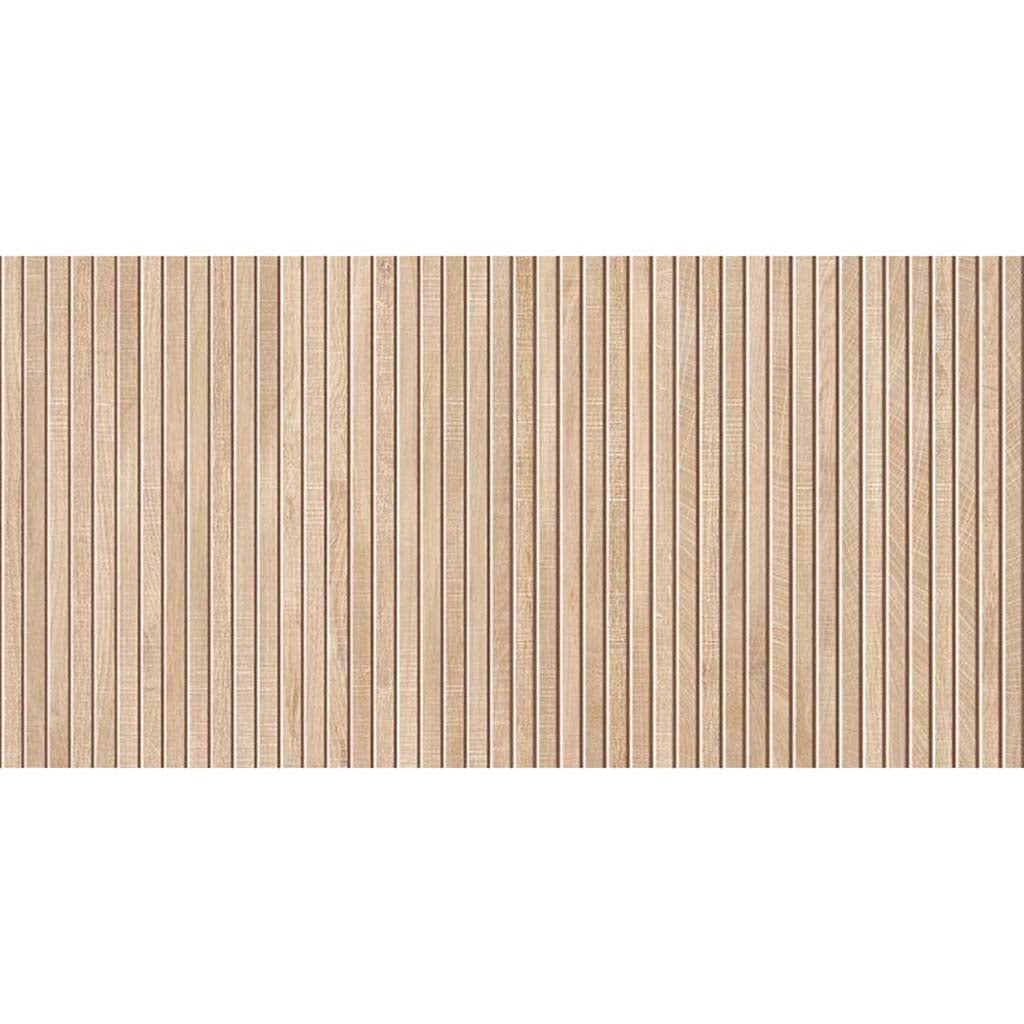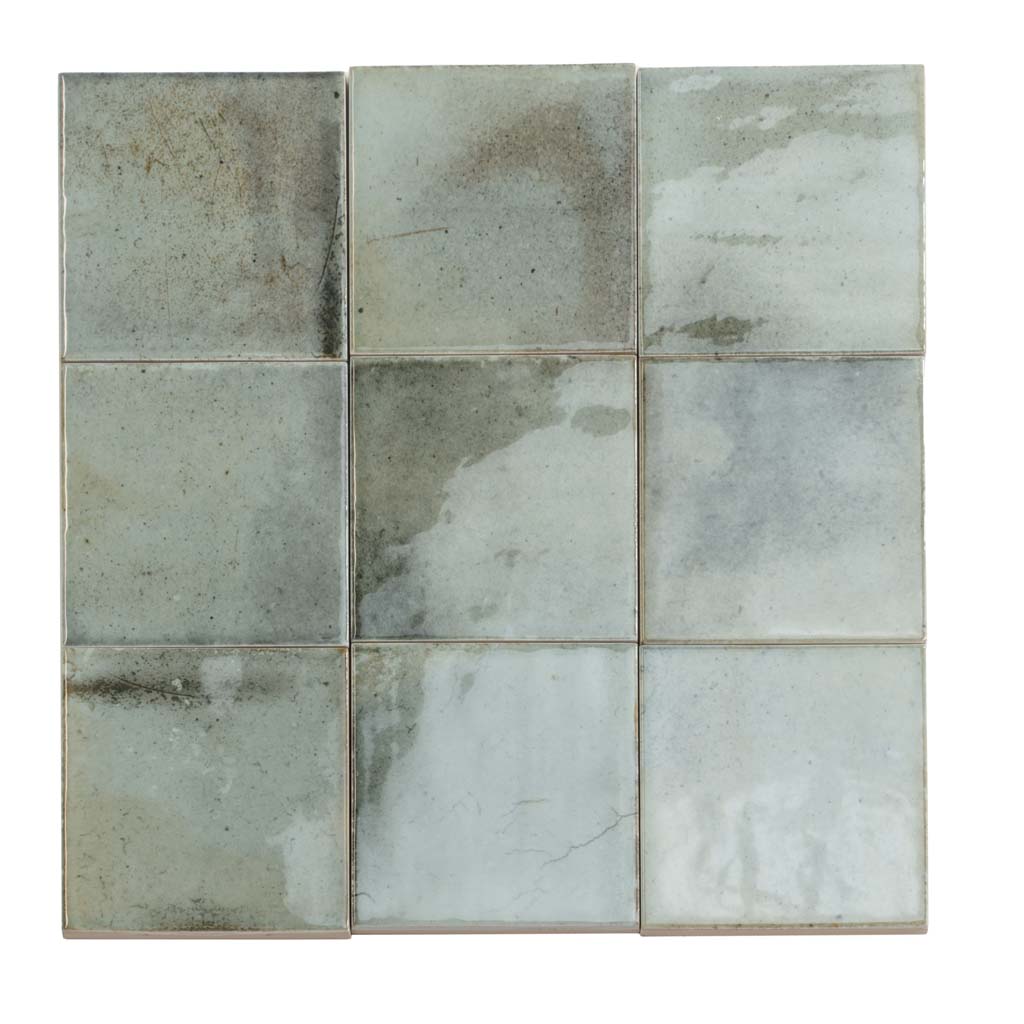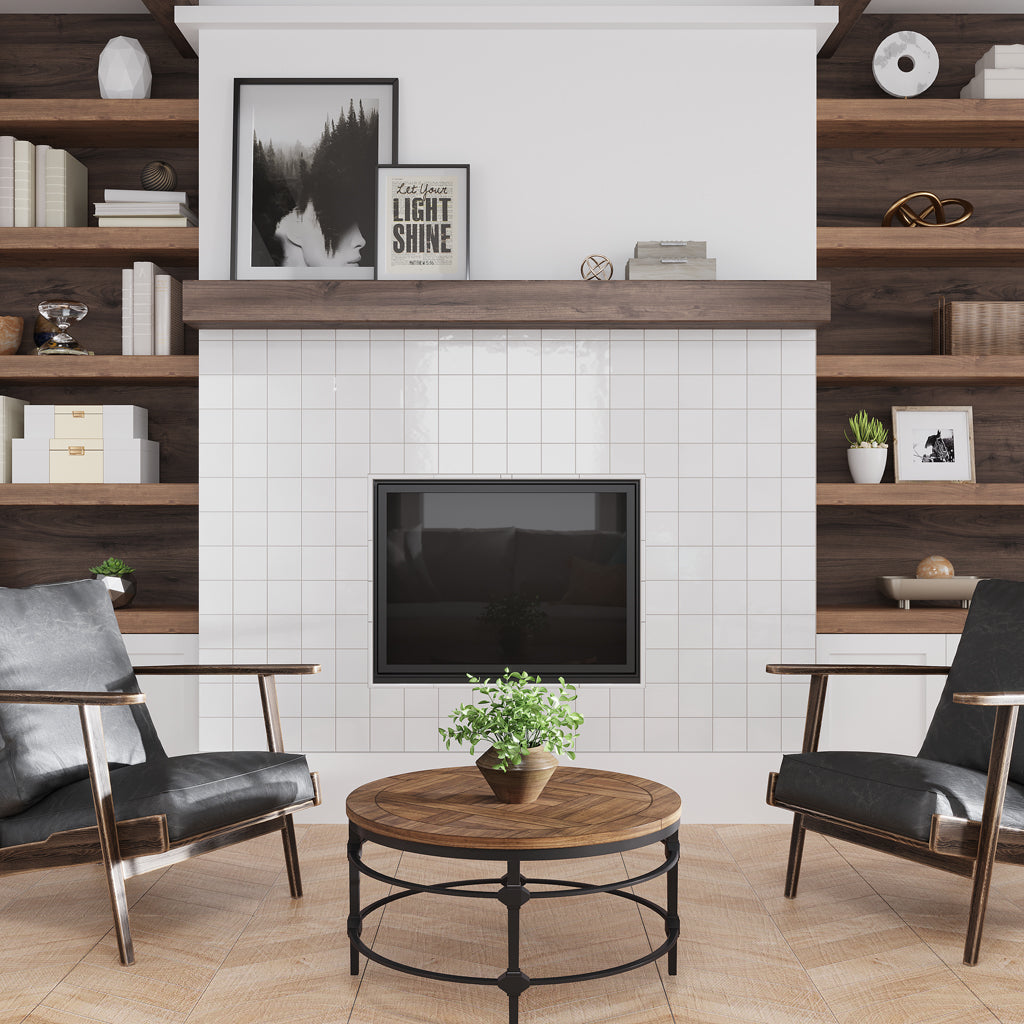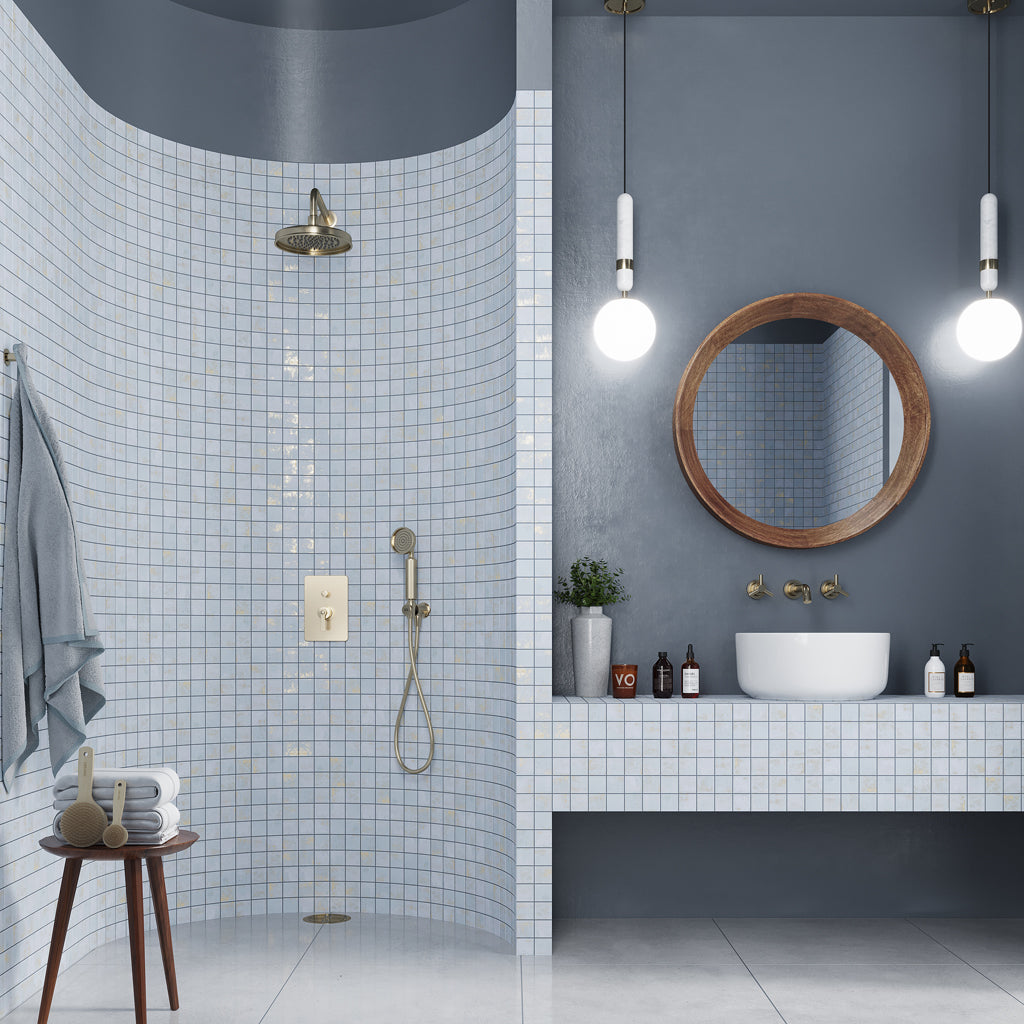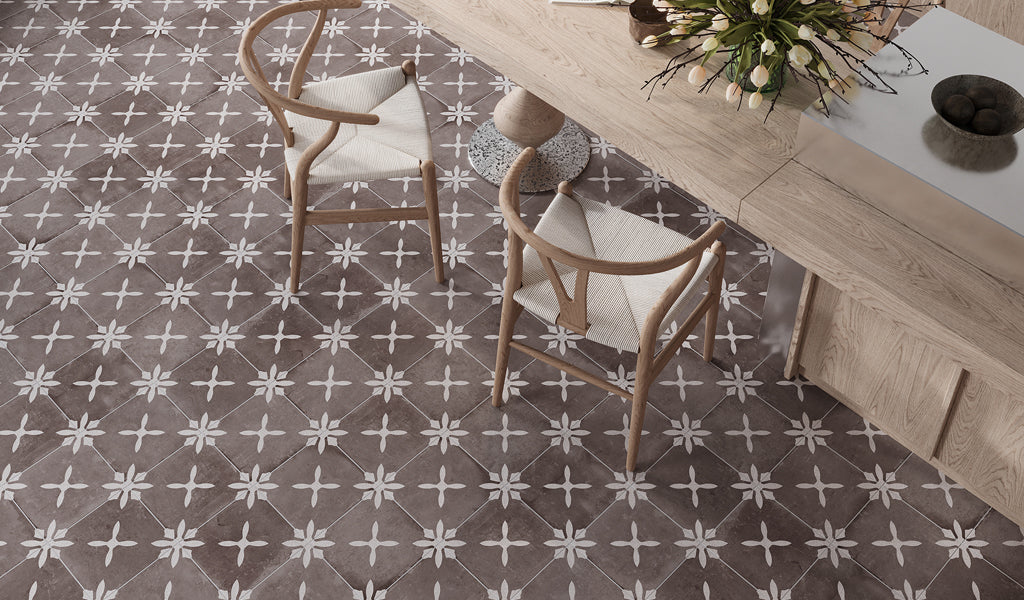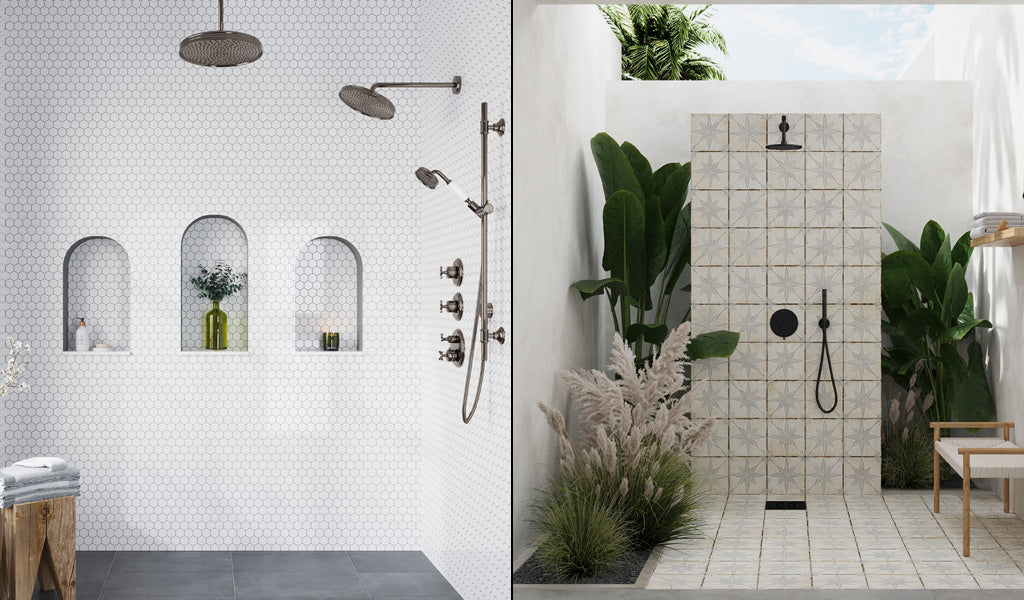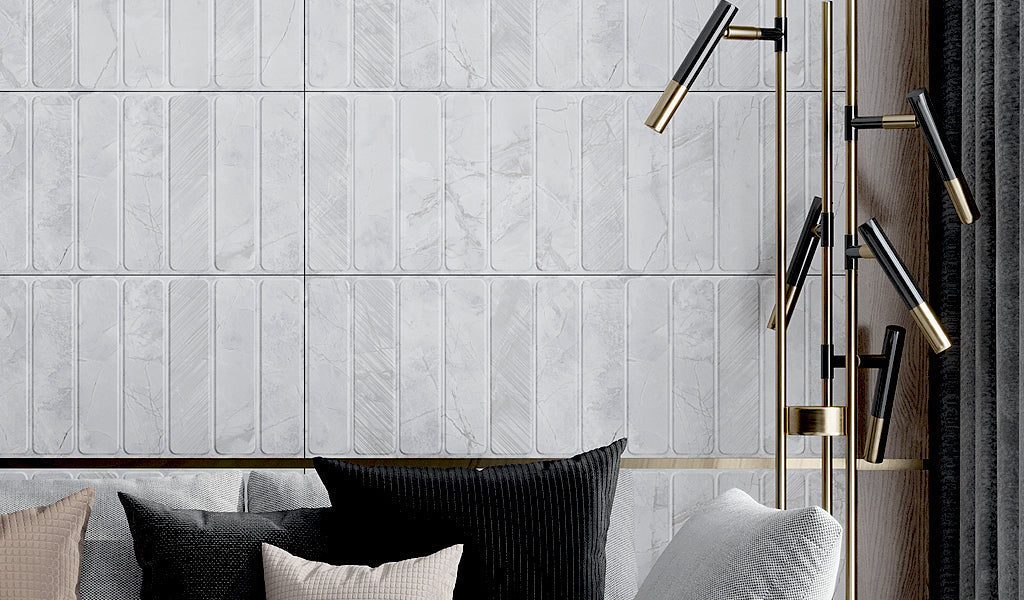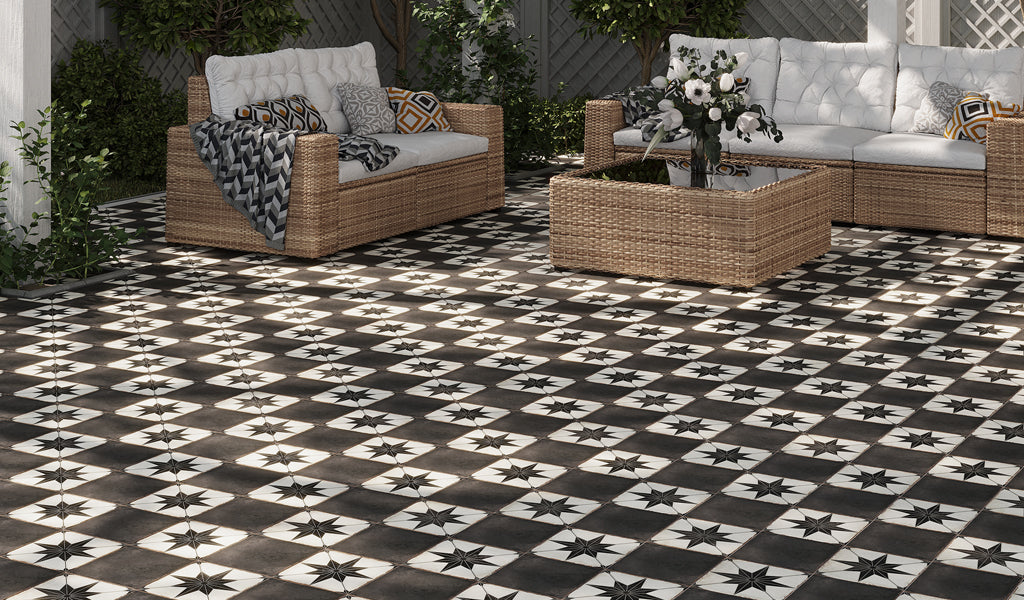Rectified Tile 101: Benefits, Installation and Costs
Apr 04, 2025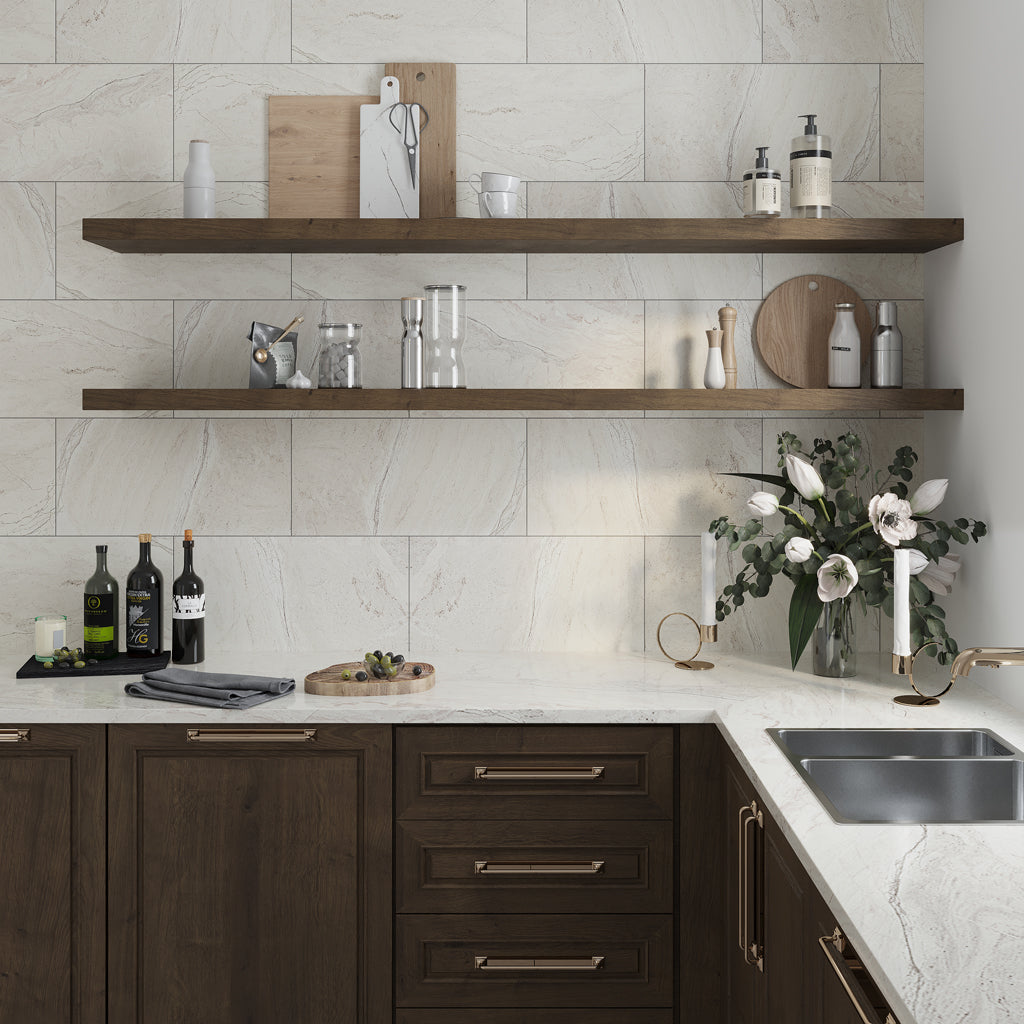
A rectified tile is where the edges are ground or sawed and looks clean. This is a perfect choice if you prefer a more cohesive, uniform, and accurate space. Unlike traditional tiles, that have slight size variations after firing, rectified tiles undergo an exacting grinding process to achieve perfectly square or rectangular shapes.
This process uses diamond grinding wheels to remove excess material and then carefully refines each tile to a consistent size while maintaining its original thickness and surface quality. Eager to know the result? Sharp, 90-degree edges allow for minimal grout lines and at the same time, deliver peerless accuracy and style.
Rectified Tile - Pros and Cons:
| Feature | Pros | Cons |
|---|---|---|
| Precise Edges | It’s quite easy to install, with a smooth and clean finish. | Careful handling is required during the installation process to maintain sharp and refined edges. |
| Custom Sizing | It can be cut and sized to create unique floor patterns. | Professional help for installation may be required to ensure precision. |
| Grout Lines | Having tight, uniform joints helps minimize grout lines. | Additional care is required during installation to avoid alignment issues. |
| Versatility | Suitable for residential and commercial applications for both walls and floors. You can also use them for outdoor spaces. | Not that great for traditional or rustic designs that require a more natural look but is still best suited for precise installations. |
| Manufacturing Precision | Gives a high-end and modern appearance to your spaces. | Additional grinding and refining process reflects on the cost. |
| Uniform Surface | Since it's smooth with a non-textured finish, it's easier to clean and maintain. | Requires regular cleaning as its precise edges do not conceal dirt like non-rectified tiles. |
Rectified vs Non-rectified tile: What’s the Difference?
If you are looking to choose the perfect tile, then knowing the difference between rectified and non-rectified tiles becomes a must. Rectified tiles, like the Bois Matte Beige Porcelain Tile help you to achieve uniform edges with minimal grout lines and give an uninterrupted surface - perfect for creating modern and stylish spaces. They also give a 3D tile look adding up to the unique decorative touch that you have dreamt of. Non-rectified tiles like the Sage Green 4x4 Glossy Square Ceramic Tile give a natural look with varied edges requiring wider grout joints, creating a classic tiled effect.
A simple tip to get that spotless finish is to use the same grout color as the tiles. If you’re excited about owning a refined finish, a rectified option like our Splendor Lappato Black Porcelain Tile delivers the right dimensional precision and a contemporary edge. This boho tile is also ideal for expansive spaces, and it’s left to your prudence to decide whether you need an aesthetically pleasing, crisp, polished design or a handcrafted feel.
Types of Sizes and Finishes for Rectified Tile
Rectified tiles are versatile and available in a variety of sizes to suit different design needs. They range from small mosaics to large-format tiles, including common sizes like 12x12, 20x40, 24x48, 30x30, and 36x36, with unique benefits that help you choose them better. While simple 12x12 mosaics are easy to install with their mesh backing, the other large-format tiles, such as 24x48 and 36x36, come with minimal grout lines, and the mid-sized options like 16x48 and 20x40 strike the perfect balance between aesthetics and easy handling.
The different tile finishes help you choose the right look and feel for both your interior and exterior applications. Let’s read more about them:
- Matte tiles are preferred for wet areas like bathrooms, shower walls, or steam rooms. When you are bothered about that extra slip-resistance, matte tiles give a helping hand, and they are also ideal for high-traffic areas. Give that rustic yet modern aesthetic to your space using our farmhouse tiles. You can also check out our 30x30 matte porcelain large-format tile to bring this look to life.
- Polished Tiles have a glossy, mirror-like finish that spices up the color vibrancy and adds a luxurious touch to any space.
- Textured Tiles provide enhanced grip and tactile depth, making them perfect for outdoor and high-moisture environments.
- Lappato Tiles strike a balance between matte and polished finishes, offering a soft sheen with subtle light reflection. Check out our Green 24x48 Lappato Porcelain Large Format Tile, a top choice among our customers.
- Natural Finish Tiles mimic the authentic appearance of raw stone, giving a fresh and organic look to your spaces.
Each finish has its unique charm, allowing for creative design solutions that blend beauty with functionality and amp up your space with the right look and feel.
How Thick Are Rectified Tiles?
Rectified tiles have a thickness ranging from 8mm to 12mm, depending on the size and material. Larger format tiles may be slightly thicker to ensure durability and prevent breakage. The precise edges of rectified tiles allow for minimal grout lines and are the sole reason they are chosen for small or big areas. They also create an illusion of space, making your area look bigger than it is.
Installation Process for Rectified Tile
Installing rectified tiles is quite the same as every other tile. Laying rectified tiles requires precision and patience because misalignment would be more noticeable compared with standard tiles.
- A leveled surface using mortar is a must for a smooth installation. This gives a precise alignment due to their sharp and clean edges.
- Applying a quality adhesive after back-buttering is recommended for durability.
- You can allow a minimum grout joint of 1/16 inch to account for natural surface contractions and expansions.
- To prevent lippage, you can use tile spacers or a leveling system. They also help you maintain consistent grout lines, giving you a professional finish.
- Place the tile, wait for it to dry, and then go ahead with the grouting process.
Grouting Techniques for Rectified Tile
Since rectified tiles are designed for a minimal grout line look, a 1/16-inch to 1/8-inch grout joint is commonly used. Unsanded or epoxy grout is ideal for smaller joints, ensuring a smooth and clean finish. Proper sealing of grout lines is essential to maintain the tile’s appearance and durability.
How Much Do Rectified Tiles Cost?
The cost of rectified tiles varies based on size, finish, and material. On average, prices range from $12 to $20 per square foot at Apollo Tile. Additionally, factors like installation complexity, adhesive quality, and grout choice can impact the overall project cost. Check out our tile installation cost tips and plan smartly for your project’s budget.
Common Challenges and Solutions for Rectified Tile
One common challenge is the strict leveling requirement, as even slight unevenness can disrupt the uniformity. Using a tile leveling system during installation helps prevent lippage. Additionally, selecting proper grout and adhesive to be sure of durability and lower maintenance issues.
How should I clean and maintain rectified tiles?
Regular cleaning with a pH-neutral tile cleaner helps maintain the finish without damaging the surface. Avoid using harsh chemicals as they may dull the tile’s appearance. For deeper cleaning, a soft-bristle brush and mild detergent would work to remove dirt and stains.
Hope you have a clear idea of what is rectified tile. Whatever the tile you choose - be it rectified or non-rectified- attaining a professional finish comes down to picking the right tile trims. Check out our expert tips to pick the perfect trim for your tiles here.
Frequently Asked Questions:
1. Are rectified tiles more expensive than non-rectified tiles?
No, the cost of the tile depends on the size, material, and finish; plus, there is no significant price difference. It is often comparable to non-rectified tiles yet gives you a high-end look.
2. What is the typical lifespan of rectified tiles?
They are made out of porcelain material that is highly durable and lasts for decades. They are also resistant to moisture, stains, and heavy foot-traffic. With regular cleaning and proper care, assure 20 to 50 years of life.
3. Can I install rectified tiles myself, or do I need a professional?
It’s up to you! If you think you can give it in for the leveled surface and the alignment, then don’t hesitate to DIY. If not, then look for a professional installer.
4. What are the best design applications for rectified tiles?
Any large, open area, sleek modern bathroom, outdoor space, high-end kitchen, and feature floors or walls can be decorated with rectified tiles. They are versatile enough and fit most places except when you need a natural or rustic look.
5. Do rectified tiles need spacers?
Yes, to ensure even spacing and prevent any lippage issues, rectified tiles should be installed with tile spacers allowing a small grout joint between 1/16 inch and ⅛ inch.
6. How do you clean rectified porcelain tile?
Use a mild pH cleaner or a mild detergent and dilute it in a bucket of water. Use a mop to clean the surface or wipe the walls with a sponge. Avoid the use of harsh chemicals or abrasive cleaners.
7. How to tell if your tile is rectified?
Check the edges and dimensions of your tile. If they have clean 90-degree cuts, then they are rectified tiles. The edges are also smooth and clean, you can very well identify by placing two tiles together to check if they fit in perfectly with a minimal grout joint.
8. What is the gap between rectified tiles?
The minimum gap is 1.5 mm to 2 mm (i.e., 1/16 inch to ⅛ inch), whereas a larger gap can be 3 mm or more for large-format tiles, depending on the area of installation. Check with a professional for more details.

